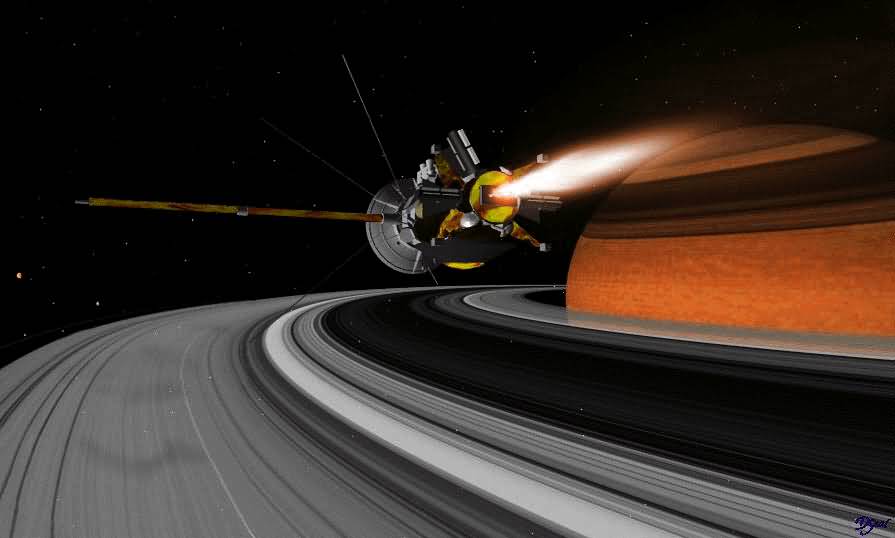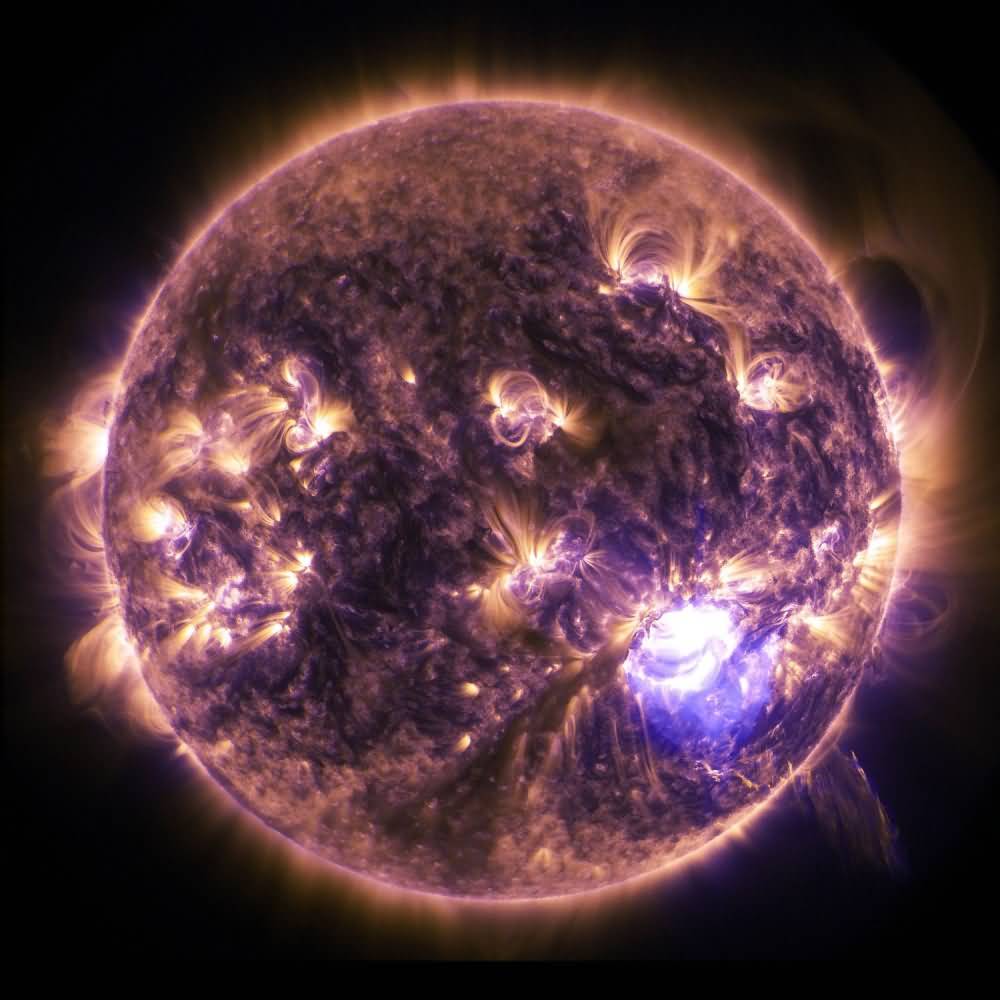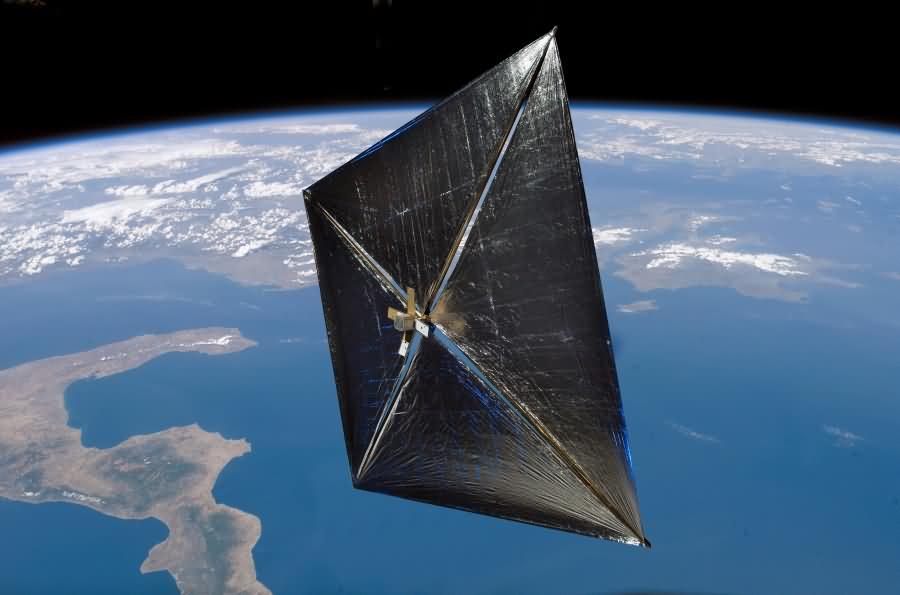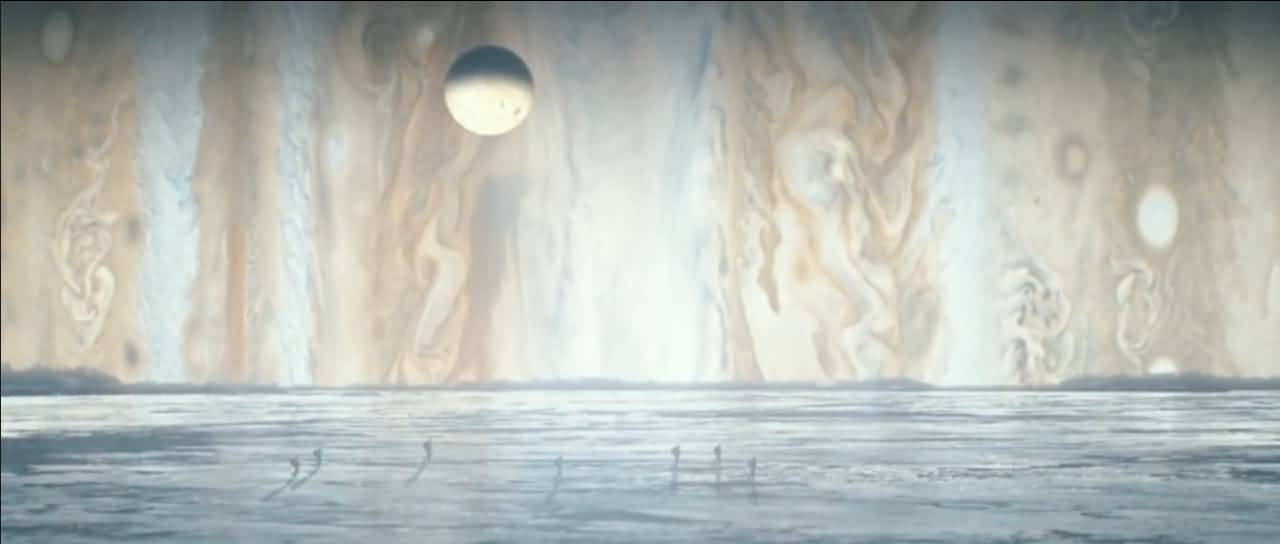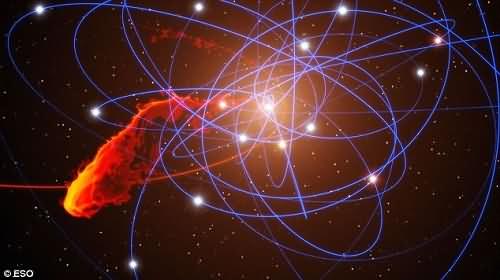10th Anniversary of Cassini's Arrival at Saturn
Ten years ago, on July 1, 2004, the Cassini spacecraft's main engines disconnected and separated. At that moment, as the rockets ceased firing and separated, Cassini achieved a milestone for humanity: It became the first spacecraft to orbit Saturn.
We can't say enough about Cassini. Its discoveries are truly indelible. They're truly etched in golden letters throughout human history. As today marks the 10th anniversary of its entry into Saturn's orbit, I'll share some of the thousands of images it captured here.
 In October 2013, Cassini ascended toward Saturn's upper horizon and captured this breathtaking image. It's perhaps the most beautiful image of Saturn ever taken.
In October 2013, Cassini ascended toward Saturn's upper horizon and captured this breathtaking image. It's perhaps the most beautiful image of Saturn ever taken.
 While we're familiar with Jupiter's giant waterspout, the red spot, Saturn also has a waterspout. This waterspout has a diameter of 2,000 km. In the infrared image, the red area represents the waterspout's lower clouds, and the green area represents its higher clouds. The waterspout's speed within the red area is known to be 500 km/h.
While we're familiar with Jupiter's giant waterspout, the red spot, Saturn also has a waterspout. This waterspout has a diameter of 2,000 km. In the infrared image, the red area represents the waterspout's lower clouds, and the green area represents its higher clouds. The waterspout's speed within the red area is known to be 500 km/h.
 In this photo, we see a different tornado forming at Saturn's south pole. However, this tornado has a strange hexagonal shape, making it unique. Its diameter is 20,000 km.
In this photo, we see a different tornado forming at Saturn's south pole. However, this tornado has a strange hexagonal shape, making it unique. Its diameter is 20,000 km.
 Saturn's moon Mimas is 400 km across and is composed primarily of ice but also rock. It has been showered with meteors numerous times, but the remnants of the largest meteor impact can be seen in Herschel crater, at left.
Saturn's moon Mimas is 400 km across and is composed primarily of ice but also rock. It has been showered with meteors numerous times, but the remnants of the largest meteor impact can be seen in Herschel crater, at left.
 Summer storms are commonplace on Saturn, but this one is very different. This storm, which formed in the planet's atmosphere in 2010, lasted so long that it was practically visible across the planet. It took a month to subside, and its final length was 300,000 km.
Summer storms are commonplace on Saturn, but this one is very different. This storm, which formed in the planet's atmosphere in 2010, lasted so long that it was practically visible across the planet. It took a month to subside, and its final length was 300,000 km.
 I've shared this image before. In July 2013, Cassini passed behind Saturn. At that very moment, Cassini captured this image of Saturn eclipsing the sun. This image was taken with visible light, and as you can see in the lower right corner, the Earth is also included.
I've shared this image before. In July 2013, Cassini passed behind Saturn. At that very moment, Cassini captured this image of Saturn eclipsing the sun. This image was taken with visible light, and as you can see in the lower right corner, the Earth is also included.
 While popular wisdom has always influenced people to look to Mars in the search for life, the most likely location for astronomers is actually Saturn's moon Enceladas, pictured here. The ice layer on the surface is thought to be the surface of a vast ocean. Water and organic molecules have also been detected in geyser analyses. This means that the most likely location for life is within our solar system.
While popular wisdom has always influenced people to look to Mars in the search for life, the most likely location for astronomers is actually Saturn's moon Enceladas, pictured here. The ice layer on the surface is thought to be the surface of a vast ocean. Water and organic molecules have also been detected in geyser analyses. This means that the most likely location for life is within our solar system.

